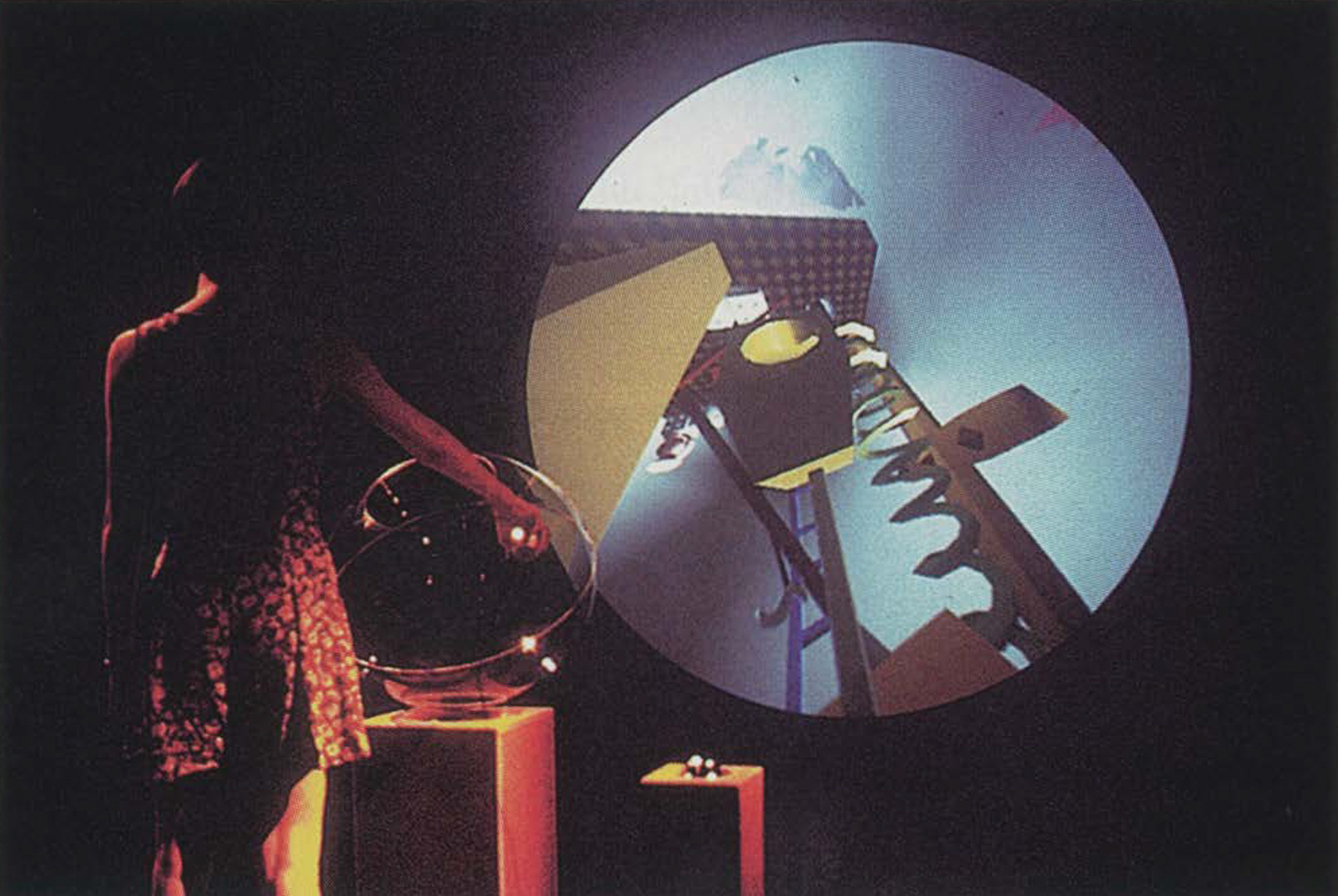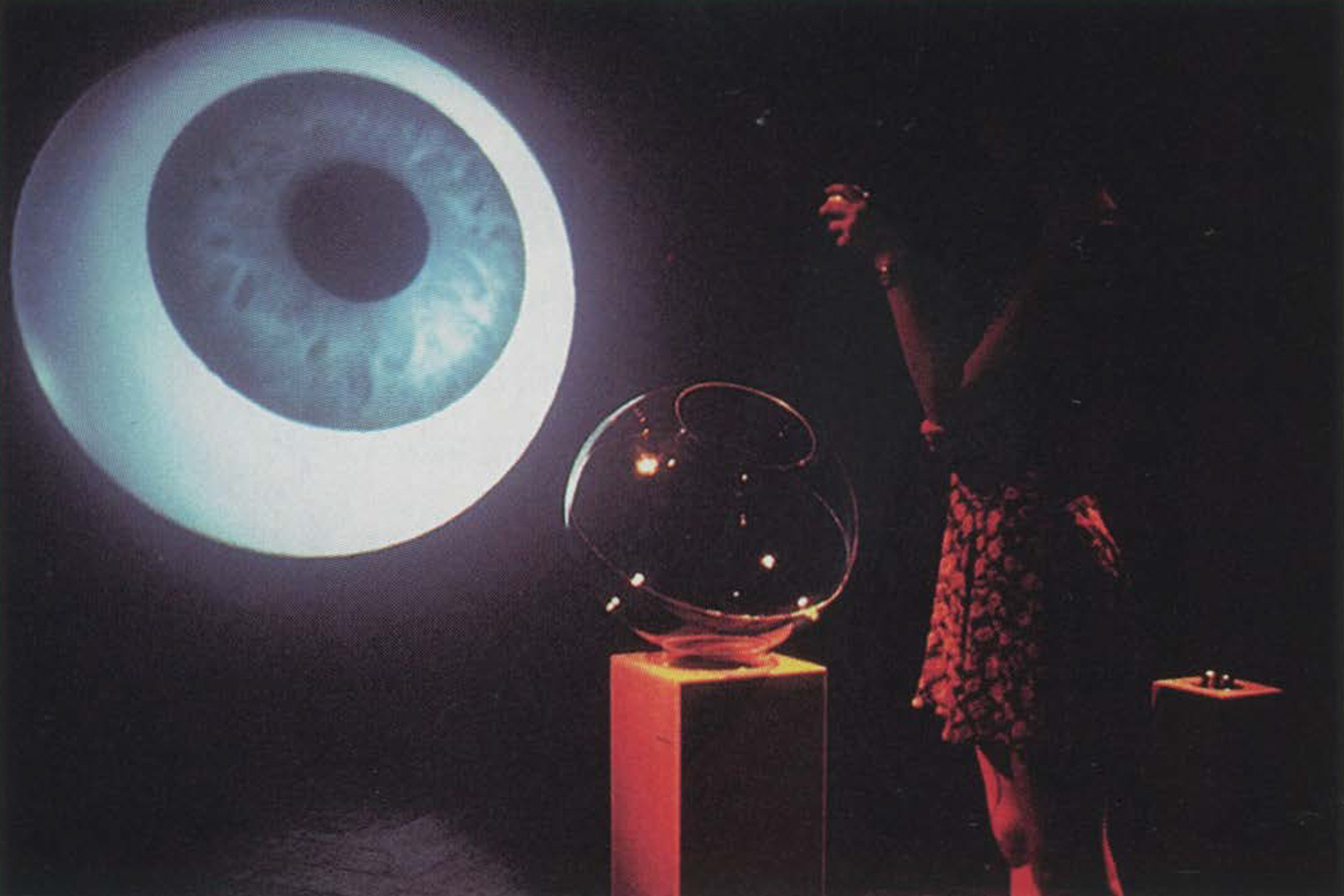Agnes Hegedüs: Handsight
Artist(s):
Title:
- Handsight
Exhibition:
Category:
Artist Statement:
This work emphasizes aspects of virtuality, such as telepresence and disembodiment/re-embodiment of the senses. Handsight also affects a transverse relation between the virtual and the real by correlating a specific physical object with respect to its virtual representation. This is done within the circumference of a visual environment where the imagery becomes a spherical anamorphoses that embodies an augmented field of view- an ‘endoscopic eye.’ The thematic structure of this work is implied as an exteriorized phenomenological projection of psychological and symbolic spaces.
All elements coherently merge in one environment that is constituted by three main apparatuses, accompanied by a ready-made object: 1) a large circular projection screen onto which real-time computer graphic imagery is projected; 2) an interactive interface that the viewer holds in his/her hand. This looks like a large eye-ball, containing a sensing device that accurately measures its spatial position and orientation; and 3) a large transparent Plexiglas sphere with a hole in its center, into which the viewer can insert the eyeball interface and then move it about inside. This sphere provides the viewer with an ‘endo-spatial’ enclosure that manual exploration maps directly into the representation of the virtual domain.
The eye-ball thus becomes a disembodied object- a virtual camera moving freely in space. The subject of observation in this real space is the transparent sphere, which when ‘looked at’ by the eye-ball, is itself seen to be represented as a virtual eye on the projection screen.
When actually entering the transparent sphere with his/her hand, the viewer also enters this virtual eye through its iris, and then confronts an image tableau that is located within this virtual space. Exploring the inner space of the transparent sphere, the viewer also explores the scenography of this virtual image tableau that is spatially located within the sphere. This conjunction of a virtual and physical space is achieved because the eyeball interface communicates to the computer the exact coordinates of its point of view with reference to the physical sphere, and the computer then generates a representation of the virtual scenography onto the round projection screen in front of the viewer.
The physical sphere establishes a boundary in the virtual world between the exterior representation of an eye and an interior representation of an image tableau that is implicitly contained within this eye. Outside the actual sphere the hand held eye-ball ‘perceives’ the virtual eye as an object (macrocosmos) that is conventionally represented in a traditional perspective view.
This inside universe represents, as a computer-generated model, the iconography of a specific type of Hungarian folk art. That tradition created miniature religious scenes in glass bottles, and one example of such a bottle is also shown in the Handsight installation, illuminated in a box behind the viewer. The choice of this contextual reference was felt to be appropriate because such a bottle tableau also expresses a sign for mental (virtual) spaces enclosed in the world of physical forms.
Handsight is an interactive computer graphic environment by Agnes Hegedus, first presented at the Ars Electronica in Linz, 1992. Application software by Gideon May and Richard Holloway. Produced with the cooperation of the Zentrum für Kunst und Medientechnologie Karlsruhe.
Contributors:
Gideon May: Applications Software, and Richard Halloway: Applications Software






